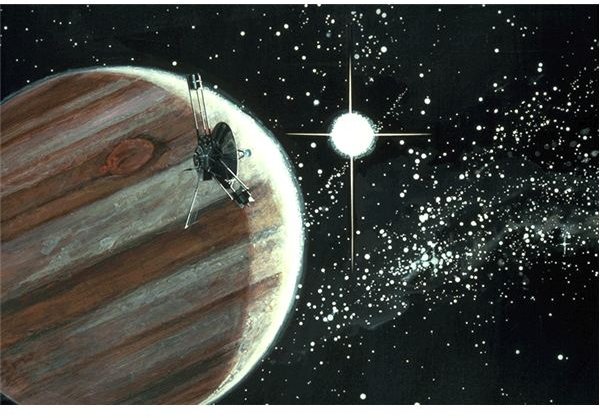This Day in Computer History: December 3
This Day in Computer History
1924
In Philadelphia, future programmer John Warner Backus was born. In 1949, he would graduate from Columbia University and join IBM, where he would head the team that would eventually develop FORTRAN, the first commercially successful high-level programming language. He also developed the Backus Naur Form (BNF) and the FP programming language, a function-level language with a strong emphasis on mathematics.
1947
Under physicist William Bradford Shockley, John Bardeen and Walter Houser Brattain invent the point-contact transistor at Bell Laboratories. The transistor would swiftly replace the industry-standard vacuum tube, marking the birth of the second generation of computer technology. The transistor held many advantages over the transistor, being faster, more efficient, and cheaper.
1968
The Control Data Corporation (CDC) introduced the first true supercomputer, the CDC 7600 Supercomputer, which was capable of performing calculations at 36 megaflops. It featured a clock speed of twenty-seven nanoseconds, a small-core memory of 65,536 60-bit words, 120 miles of hand wired connections, a freon cooling system, and the FORTRAN 70 compiler. It would be used principally by government institutions such as the Lawrence Livermore National Laboratory to execute enormous mathematical equations in FORTRAN. Specifically, the CDC 7600 was instrumental in the design of the U.S. nuclear arsenal. Price: $5 million.
1973
NASA spaceprobe Pioneer 10 became the first space craft to reach Jupiter, and in 1983, Pioneer would become the first man-made object to leave the solar system. Equipped with an Intel 4004 microchip, it is still the most distant computer in space.
1976
Computer peripheral manufacturer Pertec Computer announced its intention to acquire Micro Instrumentation and Telemetry Systems (MITS), best known for creating the Altair 8800, for roughly six million dollars in stock.
1981
IBM announced that its famed Data Processing Division (DPD), which had been responsible for numerous ground-breaking system releases over the decades, would become a part of its National Accounts Division (NAD) and National Marketing Division, which would fall under its Information Systems Group, beginning in January.
1998
Cisco Systems announced that it had agreed to acquire PipeLinks, a synchronous optical networking company, for $126 million in stock.
2002
United States President George W. Bush signs the “The Dot Kids Implementation and Efficiency Act of 2002″ into law. The Act created a new “kids” ode top-level domain within the existing U.S. domain. Internet domains ending in “kids.us”, which would become available in 2003, would be certified as child-friendly by NeuStar, the company appointed to oversee the domains. The domains would cost $65 to register along with a $250 fee for NeuStar to review the content annually.
2004
Apple Computer’s iTunes Music Store is referred for judgment to the European Commission by the British Office of Fair Trading for violations of European Union trade law by establishing separate stores for the different nations of the European Union. In response to the legal action, Apple protested that its business model was dictated by the limited rights granted to it by music labels and publishers. PC World would later speculate that “the Commission’s main target was not Apple but the music companies and music rights agencies, which work on a national basis and give Apple very little choice but to offer national stores”.
The Wikimedia Foundation launched a beta version of Wikinews, a collaborative news service to which any user could post a news article. The site will go on to distinguish itself by becoming the first news website to offer press passes free to any citizen journalist.
2005
Adobe Systems acquired Macromedia for $3.4 billion in stock. Macromedia shareholders received .69 shares of Adobe stock for each share of Macromedia share, a twenty-five percent premium.
This post is part of the series: A Chronology of Computer History for the Month of December: This Day in Computer History
This series provides a daily account of what happened on this day in the history of computing and technology. It discusses developments, breaking news, new releases and global implications that occurred as a result of these ground breaking events.
- This Day in Computer History: December 2
- This Day in Computer History: December 3
- This Day in Computer History: December 4
- This Day in Computer History: December 5
- This Day in Computer History: December 6
- This Day in Computer History: December 7
- This Day in Computer History: December 8
- This Day in Computer History: December 9
- This Day in Computer History: December 10
- This Day in Computer History: December 11
- This Day in Computer History: December 12
- This Day in Computer History: December 14
- This Day in Computer History: December 15
- This Day in Computer History: December 16
- This Day in Computer History: December 17
- This Day in Computer History: December 20
- This Day in Computer History: December 21
- This Day in Computer History: December 23
- This Day in Computer History: December 24
- This Day in Computer History: December 25
- This Day in Computer History: December 26
- This Day in Computer History: December 27
